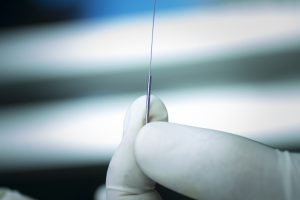
The researchers looked at 29 patients who received at least one tibial nerve stimulation treatment a month. After 14 weeks of treatment, 77 percent maintained “moderate or marked improvement” in overactive bladder symptoms.
Frequent bathroom trips decreased by 30 percent on average, nighttime bathroom trips decreased by 40 percent, and urge incontinence episodes a day decreased 100 percent.
Principal investigator Kenneth Peters said, “This study demonstrates that with ongoing therapy, patients with overactive bladder can have fewer symptoms and can return to daily activity without disruption or embarrassment that is often caused by this condition.”
Treatment options for overactive bladder
Whether or not you have an overactive bladder, you need to support and take care of your bladder health. Here are some tips to keep your bladder healthy:
- Never hold in your urine for too long as it can damage the nerves that send a response to your brain instructing you when to go.
- Stay hydrated, so your body can expel toxins and bacteria to avoid any future UTIs.
- Perform Kegel exercises. This involves squeezing and relaxing the pelvic floor muscles to maintain bladder control.
- Quit smoking as it irritates the bladder.
Your diet is an important aspect in controlling your condition. If you’ve been diagnosed with an overactive bladder, you should steer clear of acidic foods like tomatoes and oranges, curb your intake of caffeine and alcohol, stay hydrated, and get enough fiber.
An adequate fiber intake is important for overactive bladder treatment because without fiber you can develop constipation, which creates a blockage for bladder outflow.
Maintaining a healthy weight is also helpful for preventing obesity-related OAB symptoms. Enjoying a balanced diet with essential nutrients is not only crucial for our overall health, but beneficial for the bladder, too.
Foods to avoid with an overactive bladder include caffeinated foods and beverages, alcohol, spicy foods, citrus foods and beverages, carbonated foods, dairy products, sugar or honey, and artificial sweeteners.
Foods that are good to enjoy with an overactive bladder include non-citrus fruits, grains, legumes, and vegetables.
These bladder-friendly tips can help you ensure your bladder stays healthy for many more years to come.